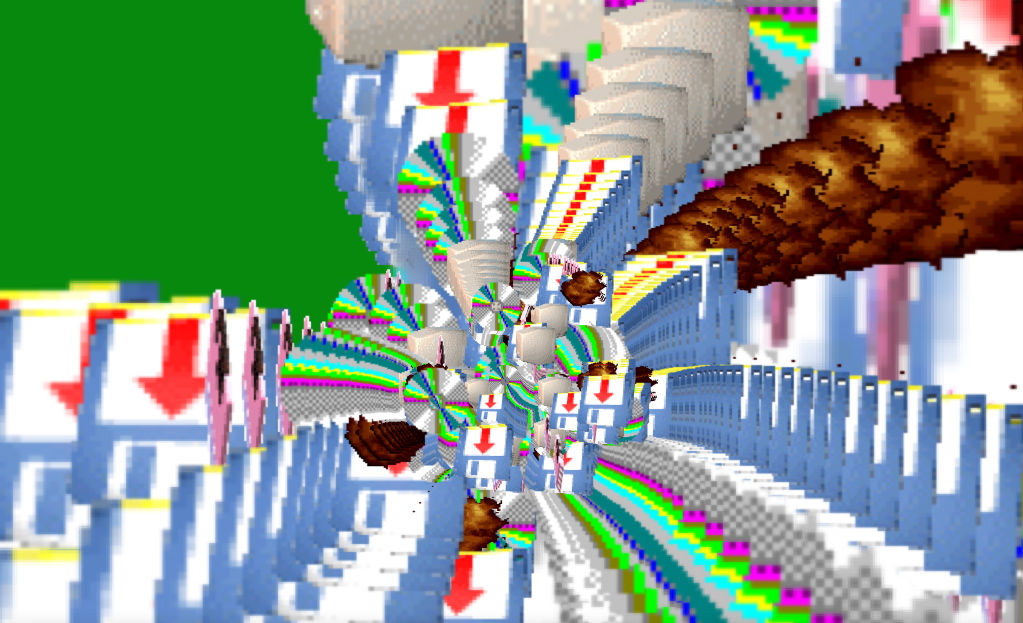 Criticalartware, which used to be an media art hystories research & development lab is now an artware demo crew from Chicago. They will present the new category of glitch-art demos and videos at this years Blockparty and Notacon 2010 (April 15th), for which they invited four of my videos. Please take a look at their site, because it is interesting and somewhat of a javascript-demo itself, changing every time you load it.
Criticalartware, which used to be an media art hystories research & development lab is now an artware demo crew from Chicago. They will present the new category of glitch-art demos and videos at this years Blockparty and Notacon 2010 (April 15th), for which they invited four of my videos. Please take a look at their site, because it is interesting and somewhat of a javascript-demo itself, changing every time you load it.
Some reflections on the entrance of a new 'niche' in the demoscene
As I have had the luck and the pleasure of following Anders Carlssons high quality research on the demoscene closely, I have had the opportunity to pick up on some of the long history of this scene. This is why I think it is important to underline the recent development of new public, participants and even new demo groups coming from different subcultures (like gaming, 8bitpeoples - chiptunes and now also glitch art interests) into the demoscene.
While it seems that many of the old 'elite' or 'old school' demoscene people are still 'stuck' in their own bounded culture (and also keep describing and pursuing it as such), outsider cultures have been finding an entrance into this culture (on both pcs and old school machines).
While for the old school / elite demosceners, demos are still often about trying to squeeze as much out of the computers live-processing capabilities as possible, many other (newer) demoscene groups and movements are focusing on other things; like extravagant shader graphicxs, decadently pixeled designs and (in the case of CGA) the haughty results of hypertrophy in hard and software.
The new kids, of which I am one, visit not only the bigger parties like blockparty but also smaller ones, like LCP and bring their own new perspectives and traditions into this what used to be a bounded scene. As a result, I think that the demoscene has become much more of a fluid, open culture. The big difference between the elite niches and the newer niches, are their perspectives on what the scene is about.
I wonder if theorists can still subscribe to the idea of the demoscene as a coherent, bounded culture with multiple facets (reflected in for instance the different compos), is there still one demoscene? Or did modern culture caught up with the demoscene a while ago and is the scene now slowly transforms it into a rhizomatic, fluid and open cultural category consisting of multiple prosumer niches.



2 comments:
Yeah, there is definitely this tendency of what you call a new niche. Viznut wrote about it as 'post-technical'.
The tension between engineers and artists was always there in the demoscene. Perhaps now there is an increased tendency towards 'art' and an embrace of media specific distortions, instead of always supressing them. Still, if you make a glitch demo you will lose the compo and be called a lamer. :) But I don't know if that's just polemic. I know I've won compos with pretty weird shit... Viznut, AliH and Ed are well-respected despite their dirty stylez. Etcccc.
I've called the demoscene a bounded culture, and what I mean is that there seems to be many shared aesthetics, methods, communication platforms, competitions, norms, references, etc, between geographically separated scenes (USA, West/East Europe, Poland, etc) and technically separated scenes (C64, PC, blabla).
It's interesting to think how the demoscene will have changed in 20 years. Surely 'media art' and the demoscene will be even closer. But I keep on enjoying the peculiar mix of conservatives and fuck-ups in the demoscene, especially in the Swedish C64-scene. It's an amazing organism which I think will never be anywhere close to the 'art world'.
Could it be that the demoscene is now more a category and that it has different niches? made up out of different traditions and streams existing next to each other?
TBH, I think demoscene is already a part of the the art scene in some respects. Just not the old school, peculiar part, maybe.
With all respect to Viznuts ideas and writings, I think he knows a lot of his stuff and he documents very well. But I am not sure if 'post-technical' is the right name. For one, because using the term post for a culture that still influences and still exists - there is a continuity - is just not right. The new school demoscene is not just a break.
Moreover, there can still be a lot of technical issues at hand in many new school demos. Maybe this name could be rethought?
It seems like a simplification of new school perspectives.
Post a Comment